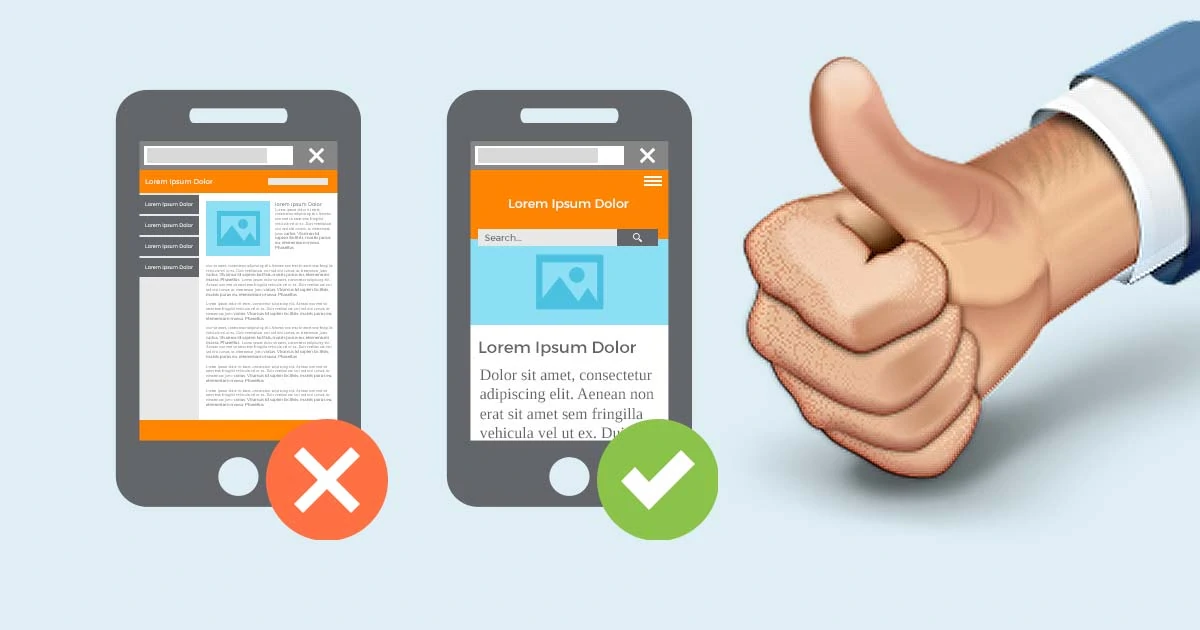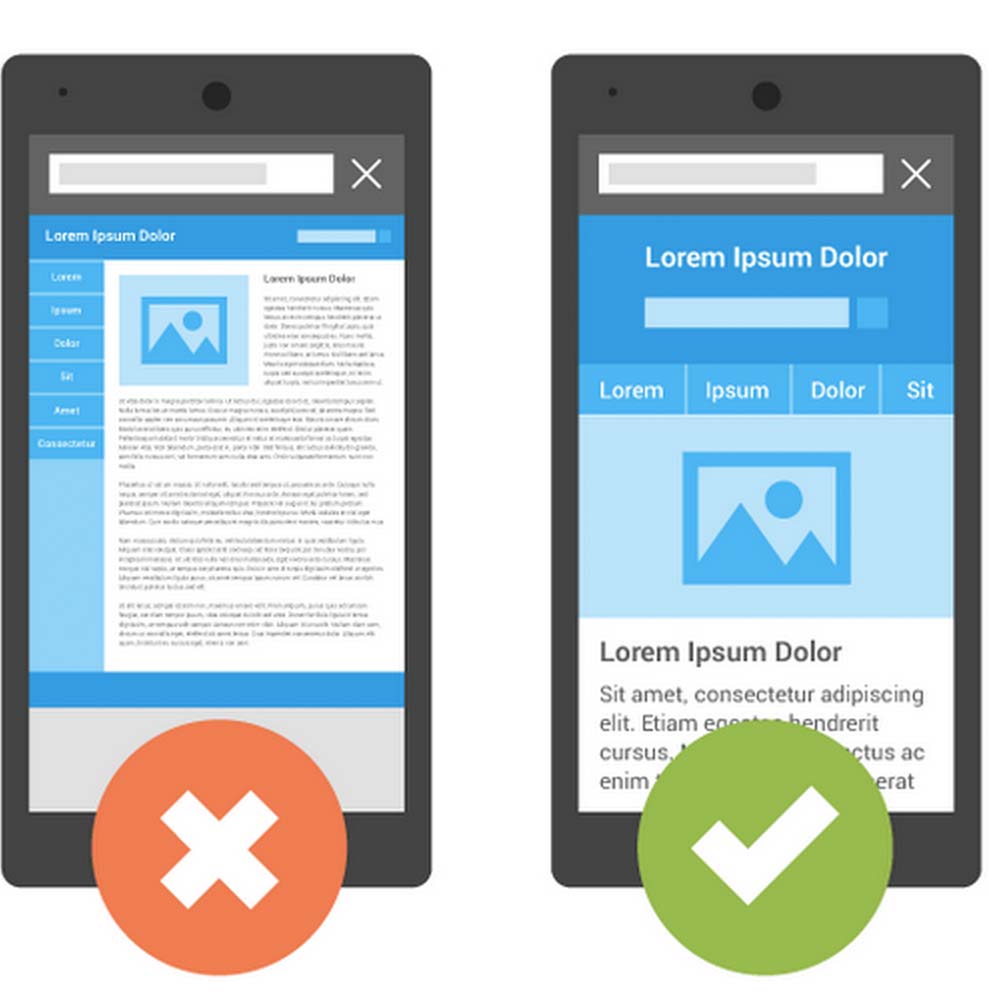Dos and Don’ts of Good Web Design and Content for Digital Marketing

Owning and operating a website for your business is only one small step in the digital marketing process. There is a lot of planning and continuous work that needs to go into the website to keep it functioning at an optimal pace for your brand. Therefore, knowing the dos and don’ts of good web design and content are vital.
Web Design Do’s and Don’ts
Since all websites begin with the designing process, it’s essential to know what your team should be doing and what they should be avoiding to create a tool that genuinely benefits your business.
The Don’ts
1. Avoid Using Too Many Typefaces and Colors
With well over 1.7 billion websites online today, web designers are always looking for ways to make their sites stand out from the crowd. While using different typefaces and colors is a great way to help create a page hierarchy, you want to avoid using too many of each. Fewer fonts bring more design consistency and less clutter. Pick 2 or 3 of each and use them wisely.
2. Don’t Make Promotion the Main Focus
While your brand wants to bring in more business, setting your website up as one giant promotion isn’t the way to do it. Consumers want answers to their pain points, not to be sold to. Provide them with answers and quality content, and you’ll begin earning their trust.
3. Don’t AutoPlay Music or Videos
Videos and music have their place online, and it isn’t on your homepage set to autoplay. People don’t want these things blaring from their speakers unknowingly. Yes, you can include both on your pages, however, include a play button and let your readers choose if they want to listen in.
4. Minimize Pop-Ups
Pop-ups are a great last-second reminder to visitors to sign up for your newsletters; however, they can quickly become a nuisance. It is especially true as more and more people turn to their mobile devices for surfing the web. Those pop-ups become difficult to maneuver around or even close, leading visitors to find their information elsewhere.
5. Minimize Dependency on Stock Images
As enticing as premade images are, internet users are sick of seeing the same stock images everywhere. It’s not to say you can’t use them, there is just a time and a place for them. The more original your imagery, the more your brand personality will stand out amongst competitors.
The Do’s
1. Have an Easy-to-Use Navigation System?
Navigation plays a bigger role in web design and a user’s ability to access content. Keep your navigation menu simple and clearly labeled so that users can find what they need, quickly.
2. Design Your Pages to Be Scannable
Readers want answers, so they are going to scan your page to see if you’re answering their questions before they really want any other details. Make sure your content is actionable and clearly state the problem you’ll be addressing early on to encourage visitors to do a more in-depth read.
3. Make Your Website Design Responsive
Having a responsive web design allows visitors to view your pages no matter what type of device they are using. With more users searching the internet on their mobile devices, having a responsive design is more crucial than ever.

4. Use Clear Calls-to-Action Buttons (CTAs)
You’ve provided visitors with information, great. Now you need to guide them on what they should be doing next. Having standout CTAs helps guide them through the funnel process so that they don’t go searching your competitors for more.
5. Balance of Space Between Images and Copy
Having adequate space between your images and text plays a vital role in user engagement. While some designers fear excessive amounts of white space, having just enough to break up large walls of text or images helps give your reader’s eye’s a break. Think of this whitespace as a period in a sentence. It allows your readers to take a moment’s break before they are encouraged to move forward.
Content Writing Do’s and Don’ts
When the hard work of designing your website is done, that doesn’t mean the work is complete. A massive part of web design is creating quality content consistently to help draw in visitors regularly. Content is a vital piece of the digital marketing process, so here are a few tips to keep in mind from our web design team in Austin.
The Don’ts
1. Avoid Overselling
As with web design, content is about the reader, not necessarily your goal to sell so many products. While your CTAs can suggest your services or product, let your content be about providing information to the reader.
2. Don’t Use Poor Anchor Text
Anchor text is used to link to more information, and it’s essential that you choose the right text to link to in order to entice a reader to click on it. Simply stating, “click here!” won’t cut it anymore. Instead, you need to be using quality anchor text that is descriptive enough to encourage readers to click if they want more information on that topic.

Image example taken from Yoast
The Do’s
1. Set the Right Messaging for Your Brand
Simply put, your brand’s messaging will help define who you as a brand are. It’s your style of communication, it’s how your clientele will come to know you and so much more. We aren’t talking about your brand’s slogan here. Successful brand messaging will tell your readers who you are and what kind of personality your brand represents.
2. Keep Content Writing Simplified
Keep your content short, sweet, and to the point! Now, that doesn’t mean you have to limit your content to 500 words. However, you want to keep your content concise. If you can get your message across in 3-5 sentences, then don’t spend 6 paragraphs explaining it. Doing this will keep your content easily digestible for readers who are notorious for having short attention spans.
3. Provide Answers
Visitors come to you in search of answers—make sure you are providing them! The point of good content is to provide information to your target audience. So, make sure you are doing just that.
4. Use Headers/Sub-headers, Lists, and Bullet Points
Breaking up paragraphs with headers, lists, and bullet points helps to make your content easy to navigate and scan through. Using these helps to eliminate those intimidating walls of text, which should be avoided at all costs.
5. Write to Humans and Not to Spiders
As crucial as search engine optimization (SEO) is, it is crucial that you are writing for the reader, not for Google’s bots. Language needs to be natural for readers to latch on and want to continue reading.
6. Adopt A Writing Style Guide
A style guide is a set of standards that a brand adopts for their written communications and applies to everything from which tense to use, punctuation and grammar use and so much more. Without a standard writing style guide, a brand’s communications will take on a very uniform look and feel, which leads to sloppy work in the long run.
Digital Marketing is All About Quality Design
Web design and good content go hand in hand. So, it’s essential to make sure you understand the best practices for each.
If you are looking for help taking your website and content to the next level, our web design team at JS-Interactive can help! Contact us today to discuss which services best suit your needs, and let’s make your website shine bright!
Get Marketing Insights to your Inbox
Boost visibility, outshine your competitors and attract more customers